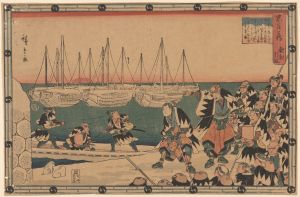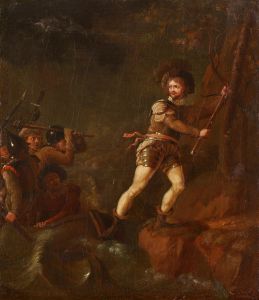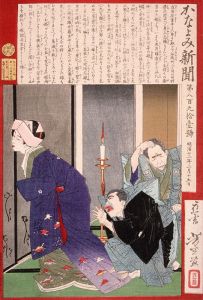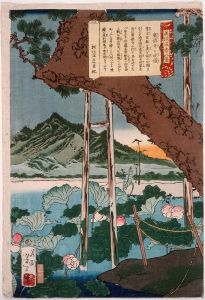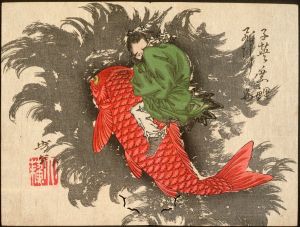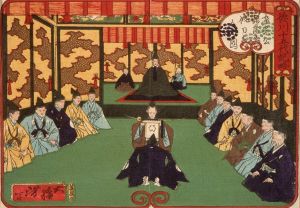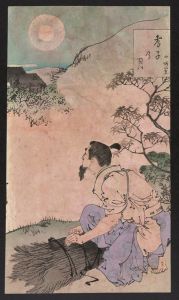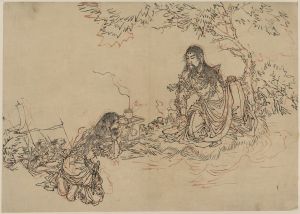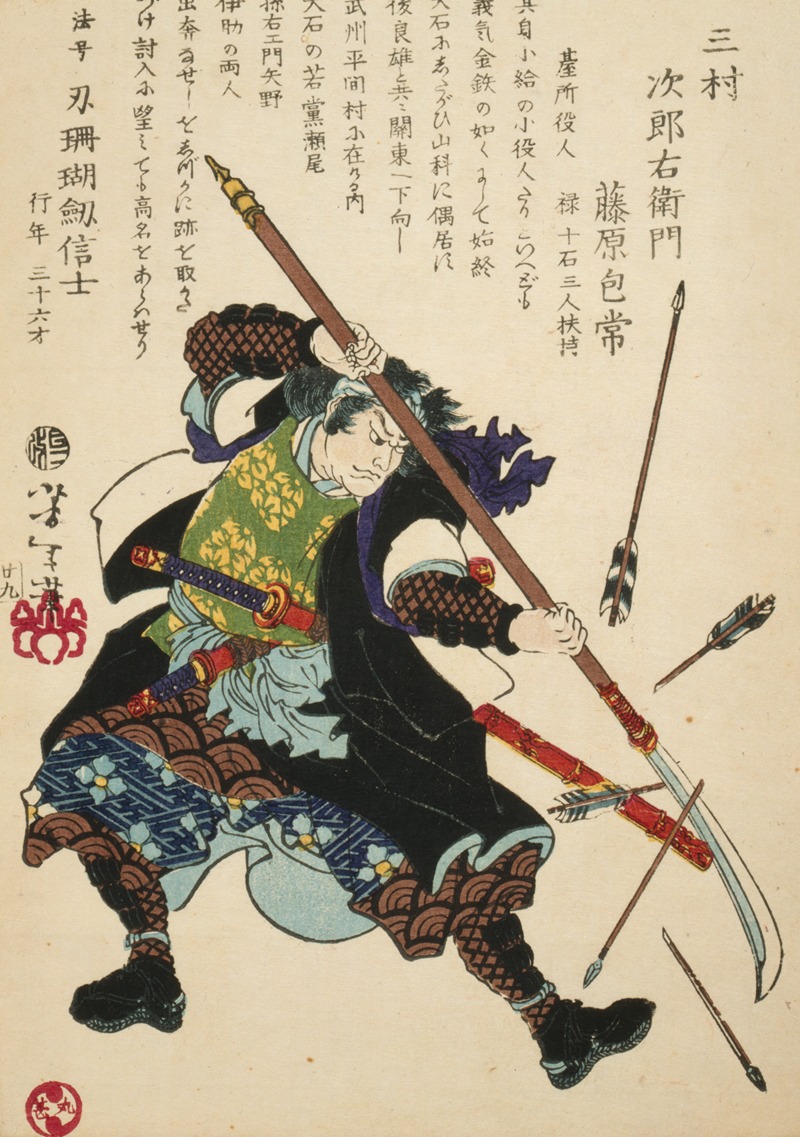
Ronin, or masterless Samurai, fending off arrows
A hand-painted replica of Tsukioka Yoshitoshi’s masterpiece Ronin, or masterless Samurai, fending off arrows, meticulously crafted by professional artists to capture the true essence of the original. Each piece is created with museum-quality canvas and rare mineral pigments, carefully painted by experienced artists with delicate brushstrokes and rich, layered colors to perfectly recreate the texture of the original artwork. Unlike machine-printed reproductions, this hand-painted version brings the painting to life, infused with the artist’s emotions and skill in every stroke. Whether for personal collection or home decoration, it instantly elevates the artistic atmosphere of any space.
"Ronin, or masterless Samurai, fending off arrows" is a woodblock print created by the renowned Japanese artist Tsukioka Yoshitoshi (1839–1892), one of the last great masters of the ukiyo-e tradition. This artwork is part of Yoshitoshi's celebrated series Tsuki hyakushi (One Hundred Aspects of the Moon), which was published between 1885 and 1892. The series consists of 100 prints, each exploring themes related to the moon, often drawing inspiration from Japanese history, folklore, and literature.
The print depicts a ronin, a samurai without a master, in a dramatic and perilous moment as he defends himself against a barrage of arrows. The figure is shown in a dynamic pose, emphasizing his skill and determination. Yoshitoshi's mastery of composition and detail is evident in the intricate rendering of the ronin's armor, the tension in his posture, and the dramatic interplay of light and shadow. The moon, a recurring motif in the series, is subtly incorporated into the background, adding a sense of atmosphere and tying the image to the overarching theme of the collection.
Yoshitoshi's work is notable for its ability to convey emotion and narrative through visual elements. In this print, the ronin's solitary struggle may evoke themes of resilience, honor, and the challenges faced by those who live outside the bounds of traditional societal structures. The depiction of the ronin reflects Yoshitoshi's interest in exploring the complexities of human experience, as well as his deep appreciation for Japan's historical and cultural heritage.
Tsukioka Yoshitoshi is often regarded as a pivotal figure in the transition from traditional ukiyo-e to modern Japanese art. His work captures the tension between the old and the new during the Meiji era (1868–1912), a period of rapid modernization and cultural change in Japan. Despite facing personal and professional challenges throughout his life, Yoshitoshi's artistic legacy endures, and his prints remain highly regarded for their technical excellence and emotional depth.
This particular print, like others in the Tsuki hyakushi series, exemplifies Yoshitoshi's ability to blend historical and mythical elements with a keen sense of drama and visual storytelling. It serves as a testament to his skill as an artist and his dedication to preserving and reinterpreting traditional Japanese art forms in a rapidly changing world.





